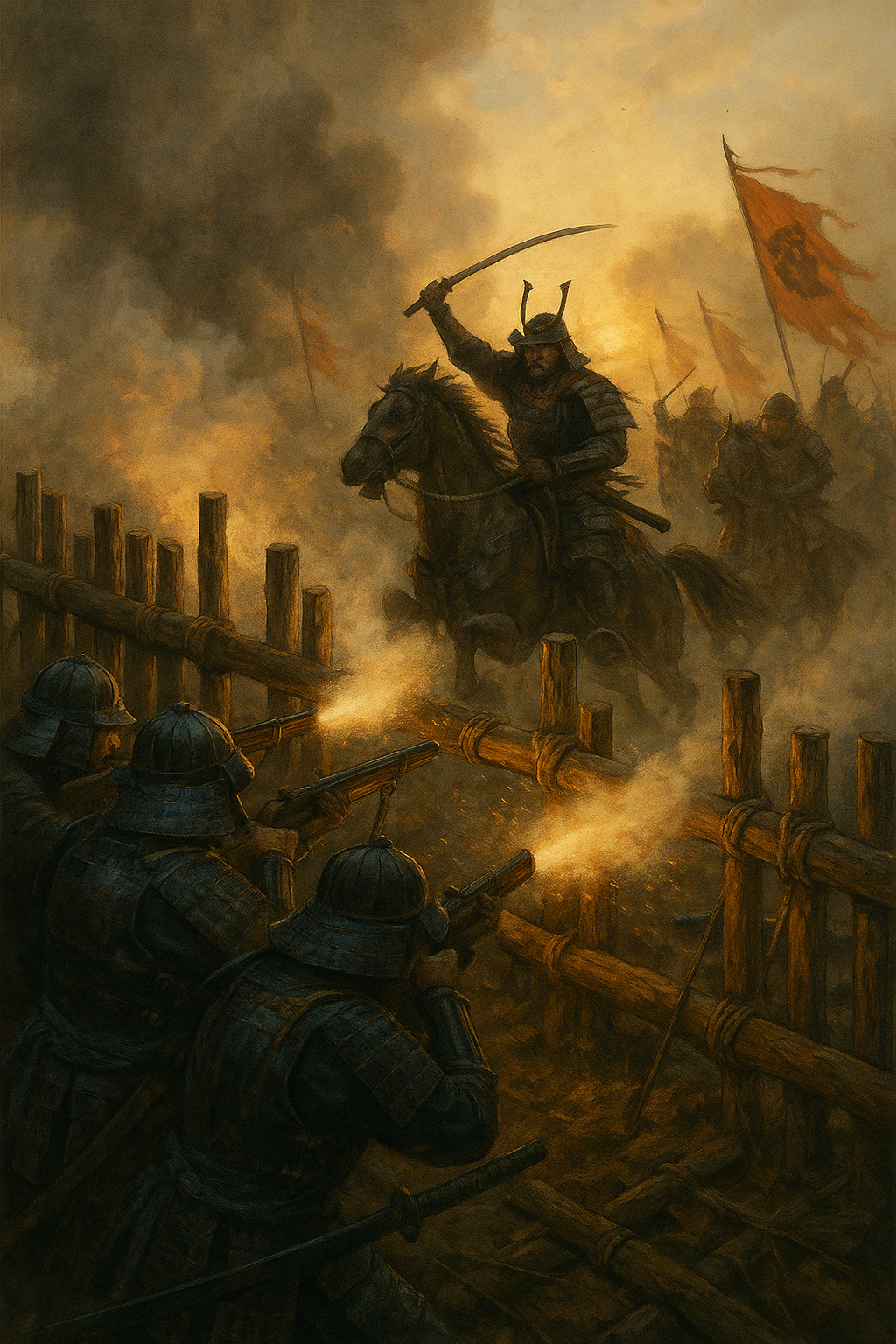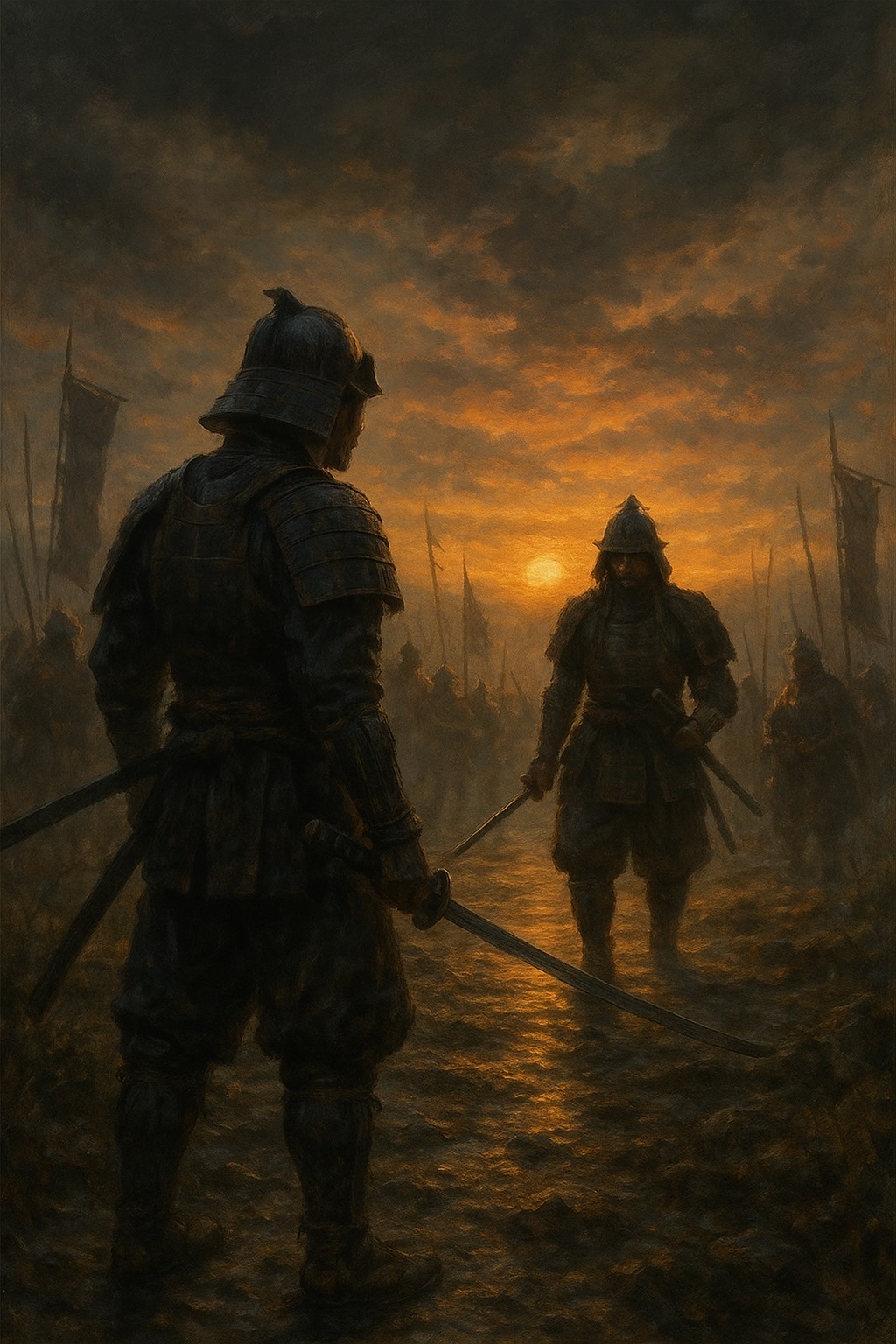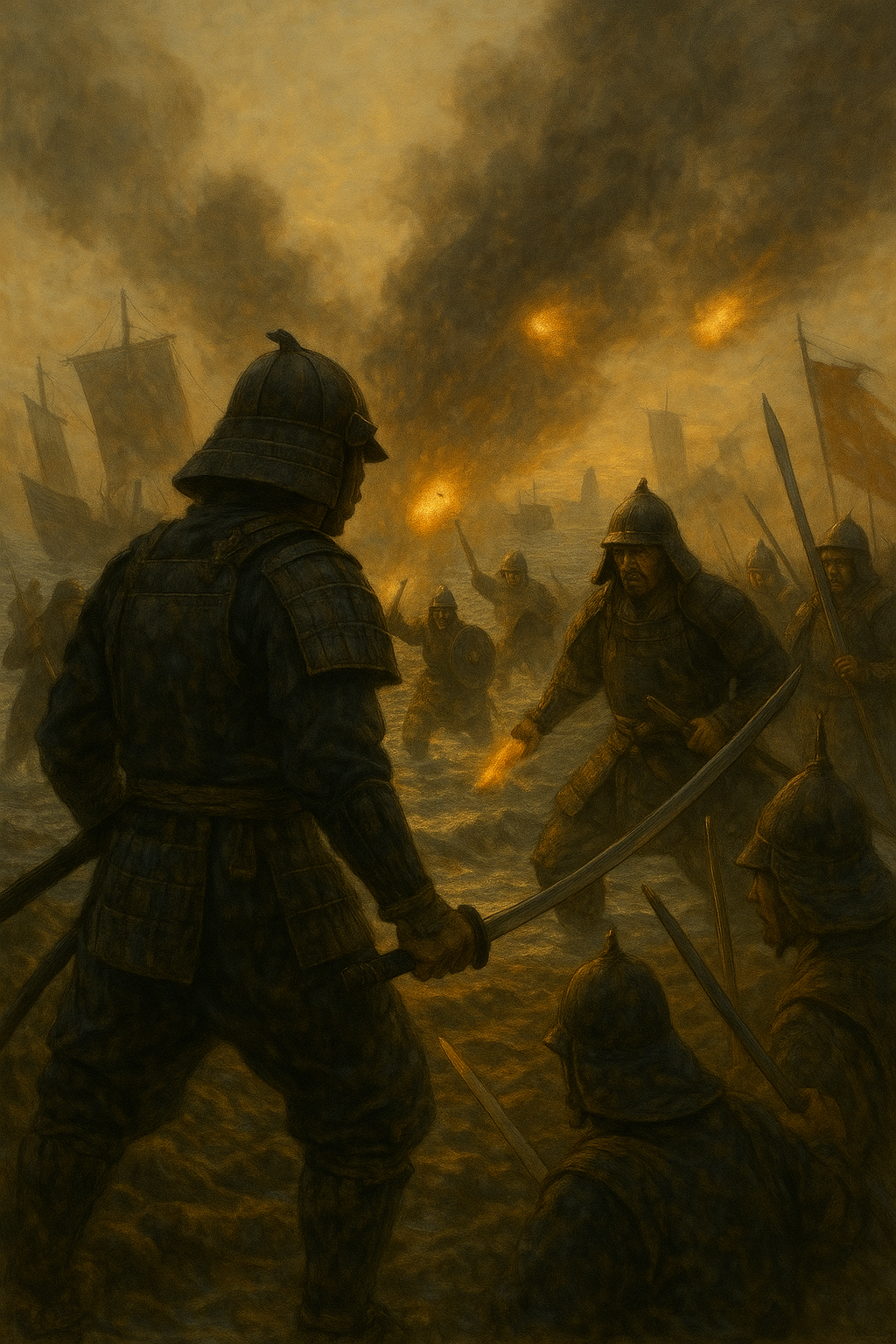Shitaragahara, Mikawa Province (modern Aichi, Japan)
The earth trembled beneath my knees. From the mountains they came—the Takeda cavalry, a clan famed across the land for their speed and devastating charges. For years, people had whispered that once they charged, no army could withstand them.
I tightened my grip on the matchlock gun, a new weapon that used a burning cord to ignite powder. Around me, comrades crouched behind wooden fences we had built through the night. Our lord—a young warlord who refused to cling to old ways—had ordered this: the fences would blunt the horses’ speed, and the guns would finish the rest.
The thunder of hooves drew closer. Faces glared from beneath iron helmets, blades flashing in the morning sun. My heart hammered so loud I thought it might burst.
“Fire!”
Flame burst forth, white smoke billowed, and the crack of gunfire split the sky. Horses screamed, riders were thrown, and the charge wavered. As my shaking hands fumbled to reload, the line behind us stepped forward to fire, then another, then another—an endless rhythm of gunfire, leaving no pause for the enemy to recover.
Through gaps in the smoke I glimpsed them—samurai on horseback slashing desperately, trying to break through. But each time they rose, they vanished again into the haze of fire and smoke.
By midday, the field was carpeted with fallen men and horses. The cavalry once believed unstoppable had been brought to a halt. And I understood: this was not just victory. The age of bows and spears was ending here. From now on, battles would be decided by fire and lead.


